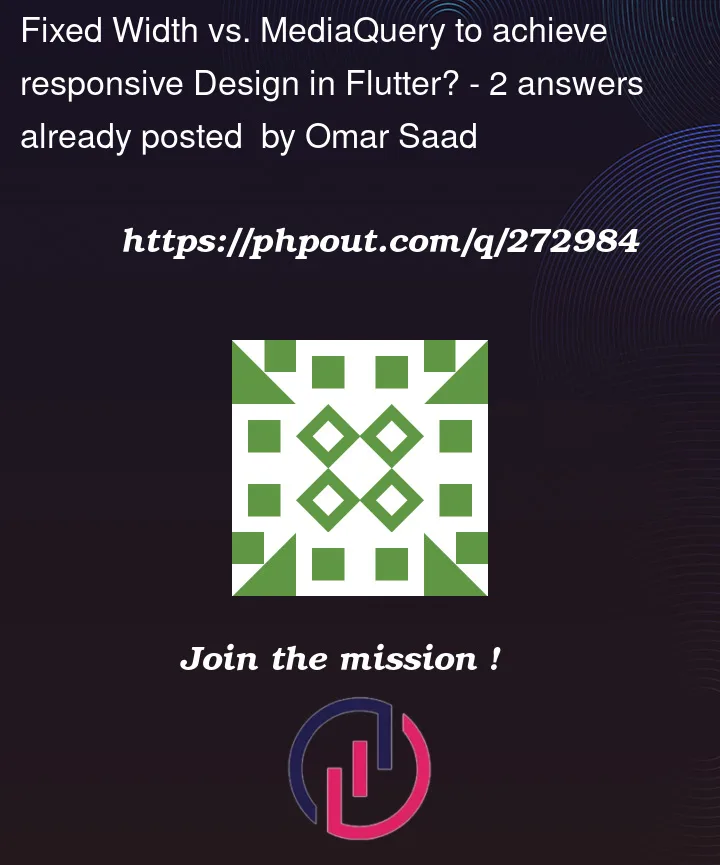I’m working on a Flutter project and want to ensure that my UI is responsive across different screen sizes. I’m a bit confused between two approaches for defining the width of elements, such as buttons. I would appreciate some guidance on which is the better approach or if there are specific use cases for each.
Approach 1: Using Fixed Width
Container(
width: 30, // Example fixed width
child: ElevatedButton(
onPressed: () {
// Button action
},
child: Text('Click Me'),
),
)
Approach 2: Using MediaQuery
Container(
width: MediaQuery.of(context).size.width * 0.3, // Example using MediaQuery
child: ElevatedButton(
onPressed: () {
// Button action
},
child: Text('Click Me'),
),
)




2
Answers
This is situational based on your design and preference. They both work well. Using
MediaQuerywill increase in size on bigger screens and maintain whitespace (on sides) in smaller screens, while hard coding will always remain the same, so it depends on your requirements.In most cases, the correct and more reliable way is to use
MediaQuery.of(context).size.width * xbecause it always references to the size of the device, making it consistent and suitable for most platforms. It is also easier to maintain.I will use a
Desktop application simulatoras an example so I can adjust the screen size to demonstration the difference.As you can see in the demonstration above, there are no issues using either methods except that fixed width look a bit better. But in other design situations, hard coding width can be an issue. Here’s an example using a
ListView.In the demonstration above you can see that hardcoding width does not make the design convenient for larger screens such as websites, ipads, larger phones, etc. but using
MediaQuerywill adjust the size to make it more convenient. If you use larger number width like width: 1000 (just as an example) part of the widget will be cut out of screen and never become visible.Avoid solutions that scale things in proportion to the device width. Check out this summary by Pixeltoast on the fundamentals of Flutter layout including MediaQuery: https://notes.tst.sh/flutter/media-query/